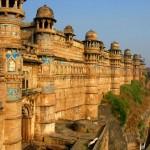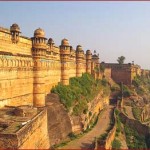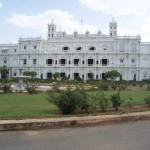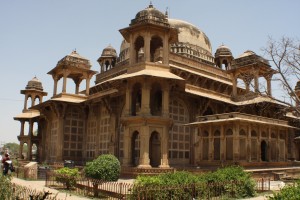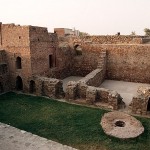Gwalior City Guide – Gwalior Travel Attractions
Gwalior, the city founded in the 8th century has successfully transformed into a modern Indian city. Ancient legends throw light on the origin of the name of this city. It is believed to have got the name after the Sage Gwalipa. It is one of the popular cities of Madhya Pradesh. Gwalior is famous for its forts, palaces, and temples. Gwalior is characterized by extremely hot summers and severely cold winters. The temperature round the year varies between 2 °C to 47°C. The months between October and March are likely the best time to visit Gwalior. A glance at the places of interest will helpful for tourists visiting Gwalior.
The Gwalior Fort
Gwalior fort also called as Johar tower built by Raja Man Singh Tomar in the 15th century is one of the most significant monuments that dominate the city. The steep road toward the fort is flanked by statues of the famous Jain tirthankaras, artistically carved into the rocks. The magnificent walls of this fort are a testimony to the invincibility of this fort. The great Moghul emperor Babur himself certified the fort as a pearl among the fortresses of HIND.Man Mandir Palace
Partially ruined Man Mandir Palace exhibits the architectural skills of the 15th century. This magnanimous building built by Raja Man Singh Tomar testifies the past glory. One can visualize the royal ladies learning dance and music in the music halls, and also the scenes of how Aurangazeb imprisoned his brother Murad and executed him in the circular dungeons of the palace. Jauhar pond is the place where the queens fulfilled the tradition of sati, a cruel practice of burning widows alive. A poignant ambience of ancient chivalry and heroism still lingers among the silent chambers of Man Mandir Palace.Jai Vilas Palace and Museum
Jai Vilas Palace is currently the residence of the Scindia family. A part of the palace has been transformed into the Jiwaji Rao Scindia Museum. The museum portrays the regal life style of the royals. Antiques like the Persian carpets and furniture of French and Italian origin are some of the items in the palace that guild the lily. One other worthy sight of this palace is the eye-catching silver train with cut glass wagons, which circled along the dining table in miniature rails to serve the visitors.Tomb of Tansen
Tansen was one of India’s legendary singers, a man credited with a voice so melodious it’s supposed to have lit lamps and caused clouds to pour rain. The 16th century singer was one of the reputed ‘nine gems’ of the court of the Mughal Emperor Akbar (the ‘nine gems’ were nine men of particular worth to Akbar—they included Akbar’s financial minister, Raja Todar Mal, and his witty adviser Birbal).
The crypt of Miyan Tansen is designed in the quintessential Mughal architectural style and is laid out in sprawling landscaped gardens, adorned by the color and fragrance of the seasonal blooms and laced by rippling brooks. An annual musical festival is also organized to commemorate the memories and musical contributions of the legendary musician.
A visit to Tansen’s Tomb on a tour to Gwalior is a wonderful experience that enlightens tourists on the cultural extravaganzas prevalent in the royal court of the Mughal potentates.
Gujari Mahal
Accommodation and Transportation
Hotel Usha Kiran Palace is a heritage hotel, while The Central Park is one of the hotels that offer star comforts. Economy hotels in Gwalior include Gwalior Regency, Hotel Landmark, Hotel Shelter, Hotel Tansen Gwalior, and The Regency Square.
Gwalior is connected to Delhi, Indore, and Bhopal by private airlines. Some of the Indian airlines airplanes from Delhi have stops at Gwalior. Gwalior is also well connected to other parts of India including the four metros through railways, even express trains like the Rajdhani and Shatabdi Express stop at Gwalior. Gwalior is one of the few cities where narrow gauge tracks are still in use. It also has two other stations within the city limits, Birla nagar and Sithouli stations, offering short distance services.
As national and state highways pass through Gwalior, it has easy access to other parts of India by road. There are regular bus services from Bhopal, Agra, Delhi, Jhansi, Jaipur and Indore. The recently launched Gwalior City Bus Service covers most of the areas within the city limits. Although mini bus and tempos are over overcrowded, one can still enjoy the travel. Auto rickshaws and taxies can also be hired to travel within the city limits.

